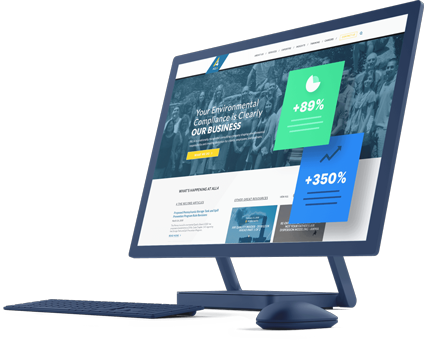What is data mining? Data mining is the process of analyzing large data sets to identify patterns and commonalities to improve business performance.
Data is critical for any business that wants to succeed. It helps you understand your audience, implement effective marketing strategies that boost sales, and acquire new customers and clients.
Data mining is a type of data analysis that can help you analyze valuable information about your website, audience, and more to improve your strategies to drive more revenue.
This page will cover everything you need to know about data mining. Check out a quick overview of the topics we’ll cover below:
Keep reading to learn more!
What is data mining?
Data mining is the process of analyzing large amounts of data to discover insights that help you improve your business operations and performance.
You can use data mining to turn raw data (data that hasn’t yet been processed or organized) into useful information that enables you to drive more sales and revenue for your company.
For example, you can use your insights to learn more about your current customers and prospects, launch targeted ads, or improve your team’s efficiency.
Data mining process: How does data mining work?
Now that you know the answer to your main question, “what is data mining,” let’s dive into how it works.
We can break the data mining process down into five stages:
- Establishing your goal
- Determining the data you want to analyze
- Collecting your data
- Analyzing your data
- Optimizing your strategies
1. Establishing your goal
Before you can analyze your data, you need to have a clear business goal in mind of the questions you want to answer and the problems you want to solve with your data.
Examples of business goals are:
- Learning more about your current customers
- Improving sales from your pay-per-click (PPC) ads
- Driving more traffic to your website
Without establishing a clear focus or goal, you’ll look at endless amounts of data without identifying any useful information to help you improve your business performance.
2. Determining the data you want to analyze
Now that you’ve established your goal, the next step in the data mining process is to determine the data you want to analyze to help you reach this goal.
Let’s look at the same goals we mentioned above as an example of types of data you can analyze:
- Learning more about your customers: For this goal, you’ll want to analyze your customers’ demographics, purchase history, and behavior on your website.
- Improving sales from PPC ads: For this goal, you’ll want to analyze the results of your PPC campaign. This can include looking at your total clicks, impressions, cost-per-click (CPC), conversion rate, and return on ad spend (ROAS).
- Driving more traffic to your website: For this goal, you can analyze your number of website visits, amount of active and returning users, and the sources of your web traffic.
Determining the data you want to analyze is essential. Without focusing on specific data sets, you can easily get overwhelmed trying to collect and look at every piece of available information, which wastes time and resources.
3. Collecting your data
Now that you have a clear focus on the data you want to examine, you’ll need to start collecting your data.
There are tons of helping data analytics tools available to help make this step of the data mining process a breeze.
A data warehouse is one of the best places to store large amounts of data securely. Additionally, you can use other helpful software options to collect specific information about your customers or marketing strategies.
For example, if you want to learn more about your audience, a customer relationship management (CRM) platform is one of the best data mining software options. It automatically collects and tracks valuable information about your prospects and current customers, like their email addresses or job title.
You can also use other data analytics platforms that enable you to track results from your marketing campaigns.
4. Analyzing your data
So, you’ve collected the data. What happens next? The most important part of data mining is the analysis stage.
At this stage, you’ll look at your data to identify commonalities, trends, and other valuable insights. You can also take the time to organize your data to make it easier to understand.
For example, when you look at your customer’s demographics, you might notice that most of them are within the same age group or location.
If you analyze the sources of your web traffic, you might notice that most of your traffic comes from organic search results on Google.
Data analysis is crucial because it helps you measure your current results and campaign successes to help you determine how you improve your strategies to drive more revenue in the future.
5. Optimizing your strategies
Once you’ve analyzed your data, it’s time to optimize your strategies and business operations based on your findings.
For example, if you notice that majority of your customers are in the same age group, you can use audience targeting features in your ads to ensure that your promotions reach more people in this age group to boost your sales.
Suppose you determine that a majority of your web traffic comes from Google. In that case, you can implement a search engine optimization (SEO) strategy to increase your rankings to improve your online visibility.
These optimizations help you improve your strategies for the future so you can drive more revenue and grow your business.
What are the benefits of data mining?
So, why do you need data mining?
There are several benefits of data mining, including:
- Improving your return on investment (ROI): When you invest in marketing strategies, your number one goal is to earn the highest ROI for your efforts. With data mining, you can analyze the success of your campaigns and make adjustments to help them drive better results for your business.
- Making data-driven decisions: When you improve your processes, you want to ensure your improvements drive the desired results instead of wasting your resources. With data mining, you can make smarter, more informed decisions that rely on data instead of guesses or gut feelings.
- Creating highly-targeted campaigns: When you implement marketing strategies, you need your messages to reach the people who are most likely to purchase your products and services. Data mining helps you learn more about your audience, so you can focus on reaching more of your ideal customers to drive conversions and sales.
Data mining is one of the best ways to measure the success of your current strategies and implement data-driven changes that will improve your revenue so you can help your company reach new heights.


